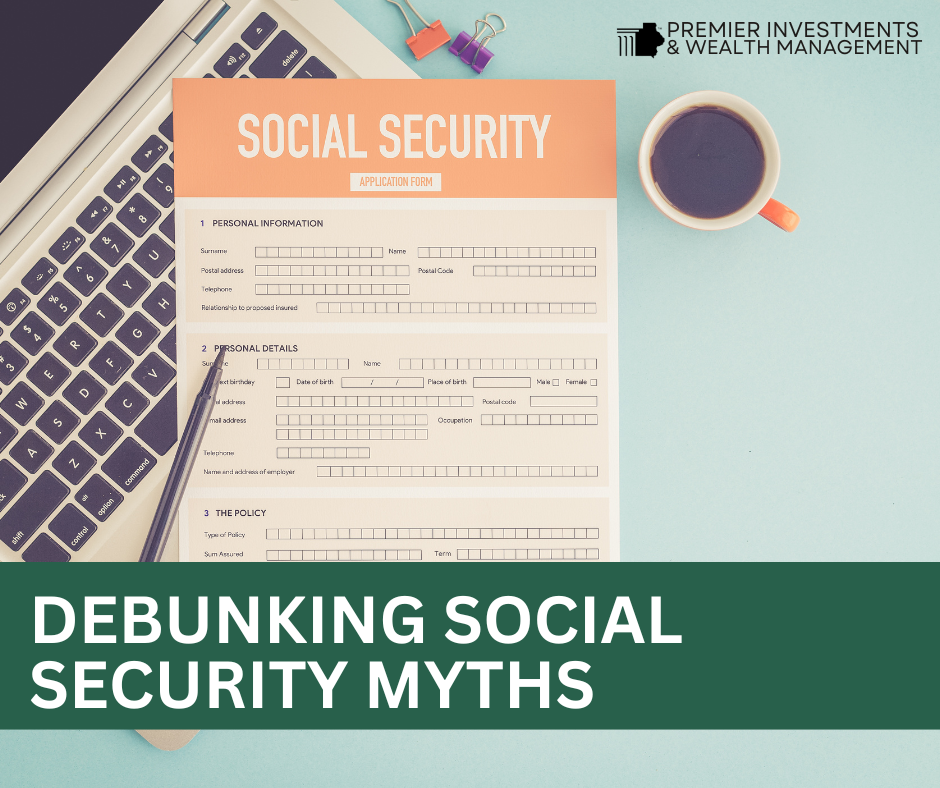Debunking Common Social Security Misconceptions

15 Aug 2024
Social Security is one of the most important programs in the United States, providing financial assistance to millions of retired workers, disabled individuals, and survivors of deceased workers. However, despite its significance, many people have misconceptions about how Social Security works. These misunderstandings can lead to financial planning errors and unrealistic expectations about retirement. Here are six of the most common misconceptions.
Misconception 1: Social Security Will Fully Replace Your Pre-Retirement Income
One of the most prevalent misconceptions is that Social Security benefits will fully replace pre-retirement income. In reality, Social Security is designed to replace only a portion of your earnings. According to the Social Security Administration (SSA), Social Security benefits replace about 40% of an average wage earner’s income after retiring. High-income earners will see a smaller percentage of income replacement, while lower-income earners may see a slightly higher percentage.
One of the most prevalent misconceptions is that Social Security benefits will fully replace pre-retirement income. In reality, Social Security is designed to replace only a portion of your earnings. According to the Social Security Administration (SSA), Social Security benefits replace about 40% of an average wage earner’s income after retiring. High-income earners will see a smaller percentage of income replacement, while lower-income earners may see a slightly higher percentage.
Misconception 2: Social Security Is Only for Retired Individuals
While Social Security is often associated with retirement, it also provides benefits to disabled workers and survivors of deceased workers. As of 2023, about 13% of Social Security beneficiaries receive disability benefits, and 10% receive survivor benefits. This shows that Social Security is not just a retirement program but also a crucial safety net for many other individuals.
Misconception 3: Social Security Is Running Out of Money
A common fear is that Social Security is on the verge of bankruptcy. While it is true that the program faces financial challenges, it is not going to run out of money entirely. According to the 2023 Social Security Trustees Report, the trust funds that pay retirement and survivor benefits are expected to be depleted by 2033. However, even if the trust funds are exhausted, incoming payroll taxes would still cover about 77% of scheduled benefits. This means that while benefits could be reduced if no changes are made, Social Security will still be able to pay a significant portion of benefits.
Misconception 4: You Don’t Have to Pay Taxes on Social Security Benefits
Many people mistakenly believe that Social Security benefits are not taxable. However, depending on your total income, up to 85% of your Social Security benefits may be subject to federal income tax. The SSA states that if you file as an individual and your combined income (which includes adjusted gross income, nontaxable interest, and half of your Social Security benefits) is between $25,000 and $34,000, up to 50% of your benefits may be taxable. If your combined income exceeds $34,000, up to 85% of your benefits may be taxable.
Misconception 5: You Should Start Collecting Social Security As Soon As You’re Eligible
While you can start receiving Social Security benefits as early as age 62, doing so will reduce your monthly benefits. For every month you claim benefits before your full retirement age (which ranges from 66 to 67, depending on your birth year), your benefits will be permanently reduced. Conversely, if you delay claiming benefits past your full retirement age, your benefits will increase by 8% per year until you reach age 70. For many people, waiting to claim benefits can significantly increase their lifetime Social Security income.
Misconception 6: Social Security Benefits Are the Same for Everyone
Social Security benefits are based on your earnings history and the age at which you start receiving benefits. The SSA calculates your benefits using your highest 35 years of earnings. If you have fewer than 35 years of earnings, zeros are factored into the calculation, which can lower your benefits. Additionally, the age at which you begin receiving benefits also impacts the amount you receive, with those delaying benefits until after their full retirement age receiving higher monthly payments.
Understanding the realities of Social Security is vital for effective retirement planning. By debunking these common misconceptions, you can make more informed decisions about your financial future.
Important Information:
Data Source: Retirement Ready – Fact Sheet for Workers 61-69. Social Security Administration. February 2023. www.ssa.gov
Securities and advisory services offered through LPL Financial, a registered investment advisor, Member FINRA/SIPC.
The opinions voiced in this material are for general information only and are not intended to provide specific advice or recommendations for any individual.
All investing involves risk including the possible loss of principal. No strategy assures success or protects against loss.
